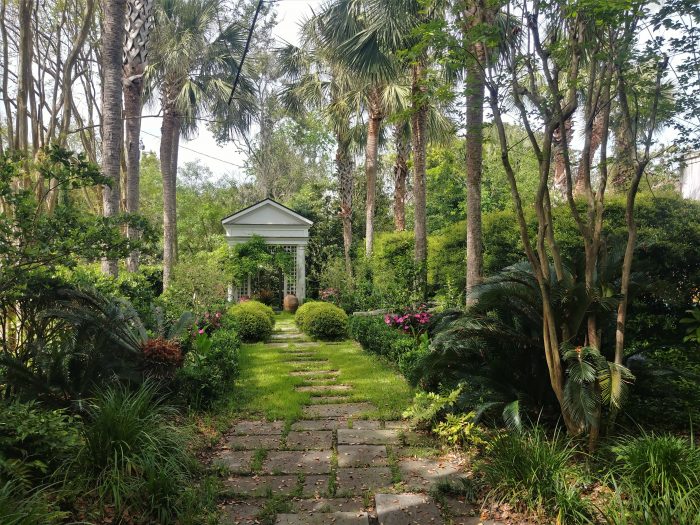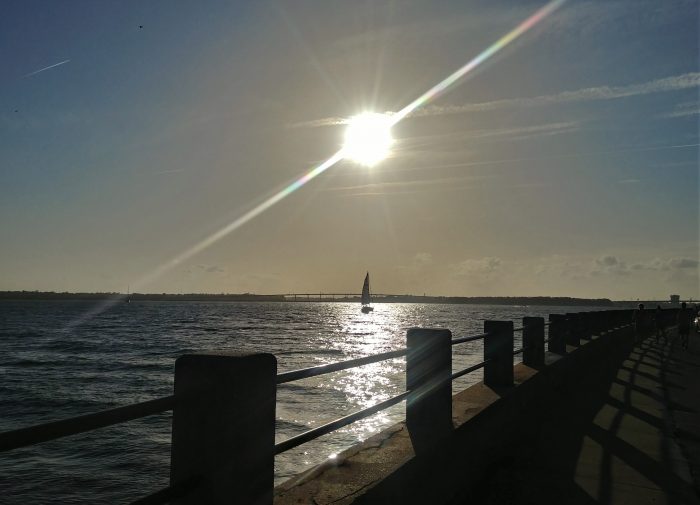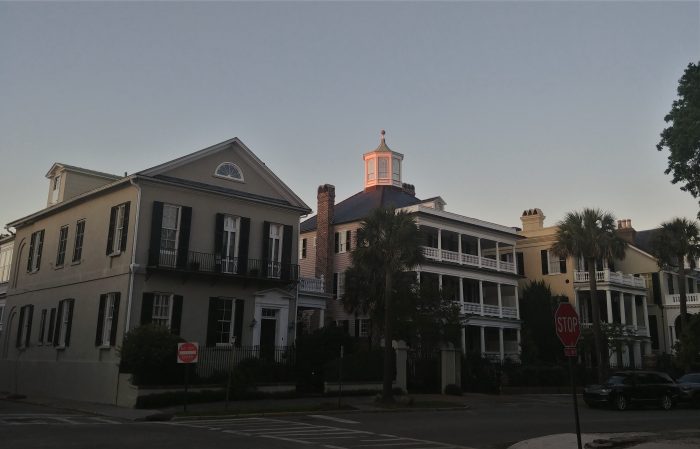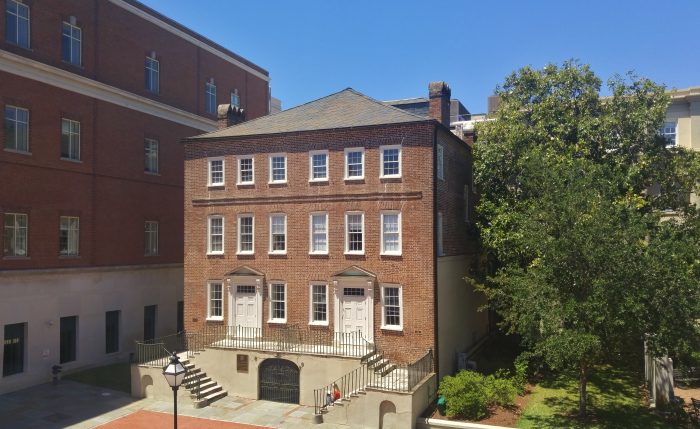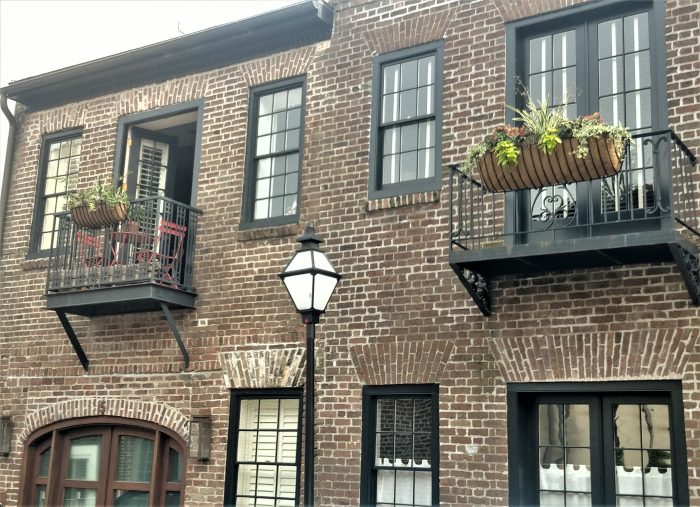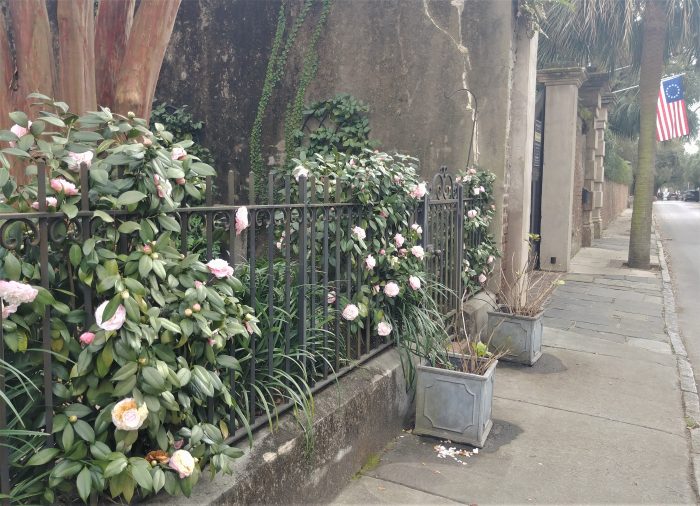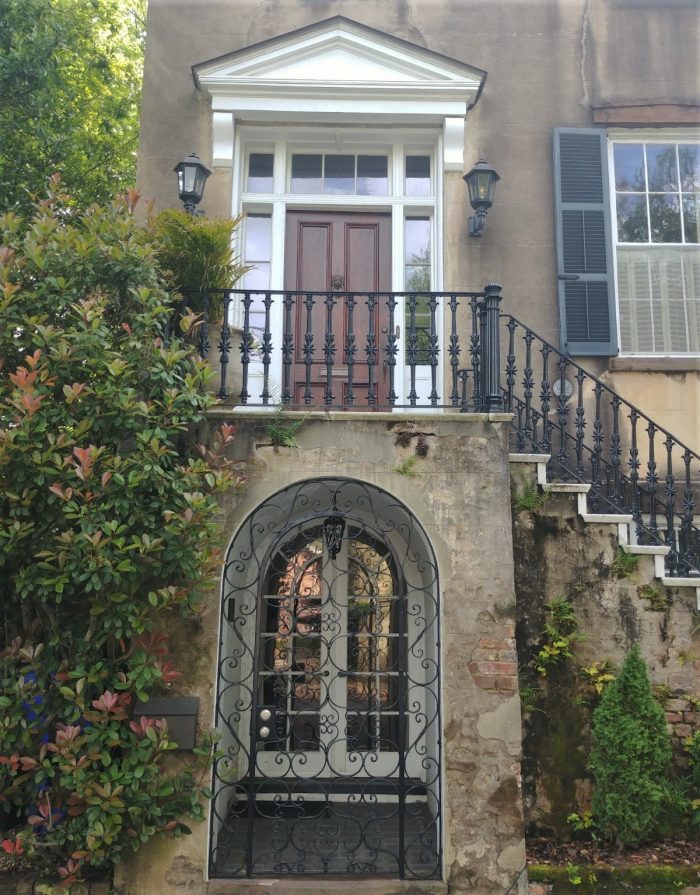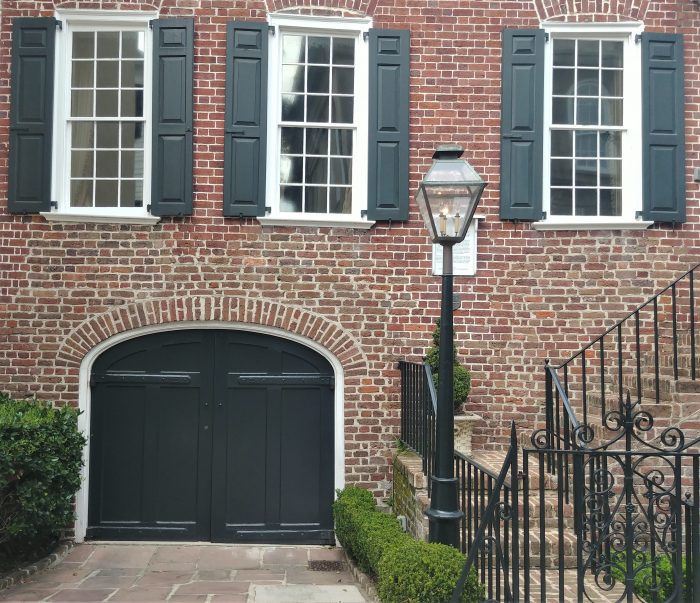This beautiful Charleston garden on South Battery was designed in the 1920’s by the man who literally wrote the book on Charleston gardens in 1951 — Loutrel Briggs. (See Charleston Gardens by Loutrel Briggs.)
Thirsty Sailors
Some sailors heading home on the Ashley River at the end of a beautiful Charleston day. If they were looking for the closest drink, they could tie up at the City Marina and walk into Salty Mike’s — a Charleston classic.
Limehouse
This lush Charleston spring scene can be found on Limehouse Street.
Last Rays
The final rays of the day’s sun touching the top of the Col. John Ashe house on South Battery. Located across the street from White Point Garden, this house has seen a lot — including the start of the Civil War and the hanging of pirates in the park.
Blake Tenement
The Blake Tenement was built between 1760 and 1772. Once a free-standing structure, it is now part of the Charleston County Judicial Center complex.
Cordes
This pretty scene is on Cordes Street, near Waterfront Park. The area, which was once home to a number of wharfs, was developed between 1790 and 1800 — primarily by the wealthy merchant and wharf owner Samuel Prioleau (pronounced “pray-low”). This street was named after his wife’s family.
On Legare
A glimpse down Legare Street, with the Sword Gate on the left.
Upstairs, Downstairs
This beautiful set of doors can be found on a c. 1852 house on Logan Street, between Tradd and Broad Streets. As the only house on the block to survive the fire of 1861, it is the only antebellum house on the block. It later became the home of Susan Pringle Frost, the founder of the Preservation Society — among her many achievements.
Flowering Palmettos
When the park around Colonial Lake (on the left) was renovated in 2016, a line of palmetto trees was added along Rutledge Avenue. Each has these wonderful flowering plants on their trunks — happy and beautiful.
Single
This beautiful house on Tradd Street was built c. 1765 as a double tenement, which required two sets of stairs. In the mid 19th century it was converted to a single family house, which eliminated the need for the second set of stairs.
- « Previous Page
- 1
- …
- 66
- 67
- 68
- 69
- 70
- …
- 188
- Next Page »
